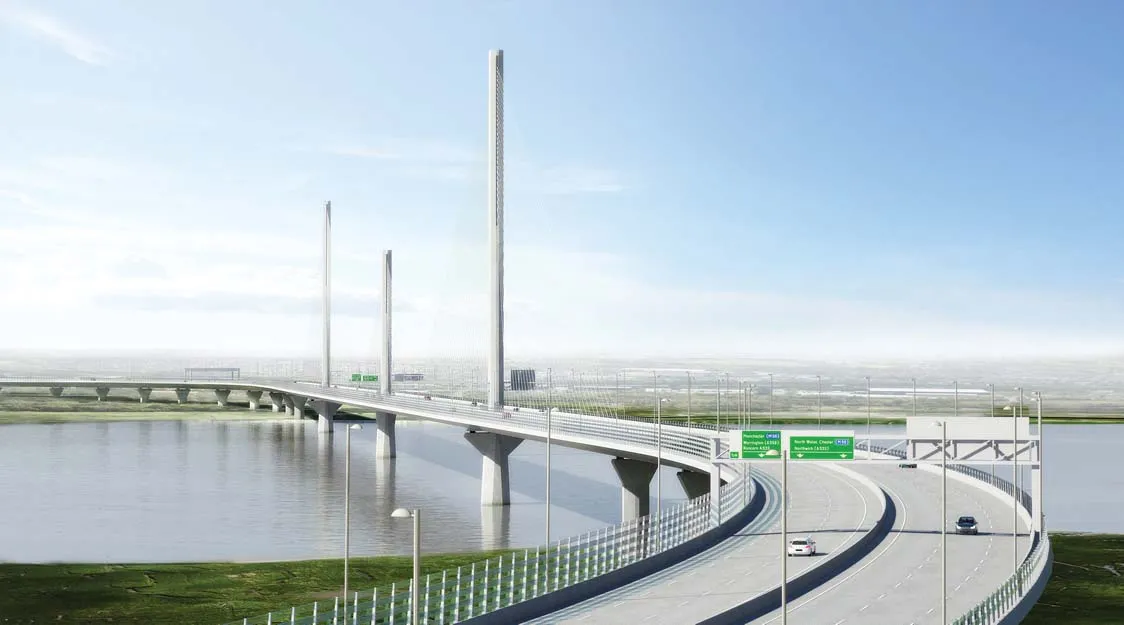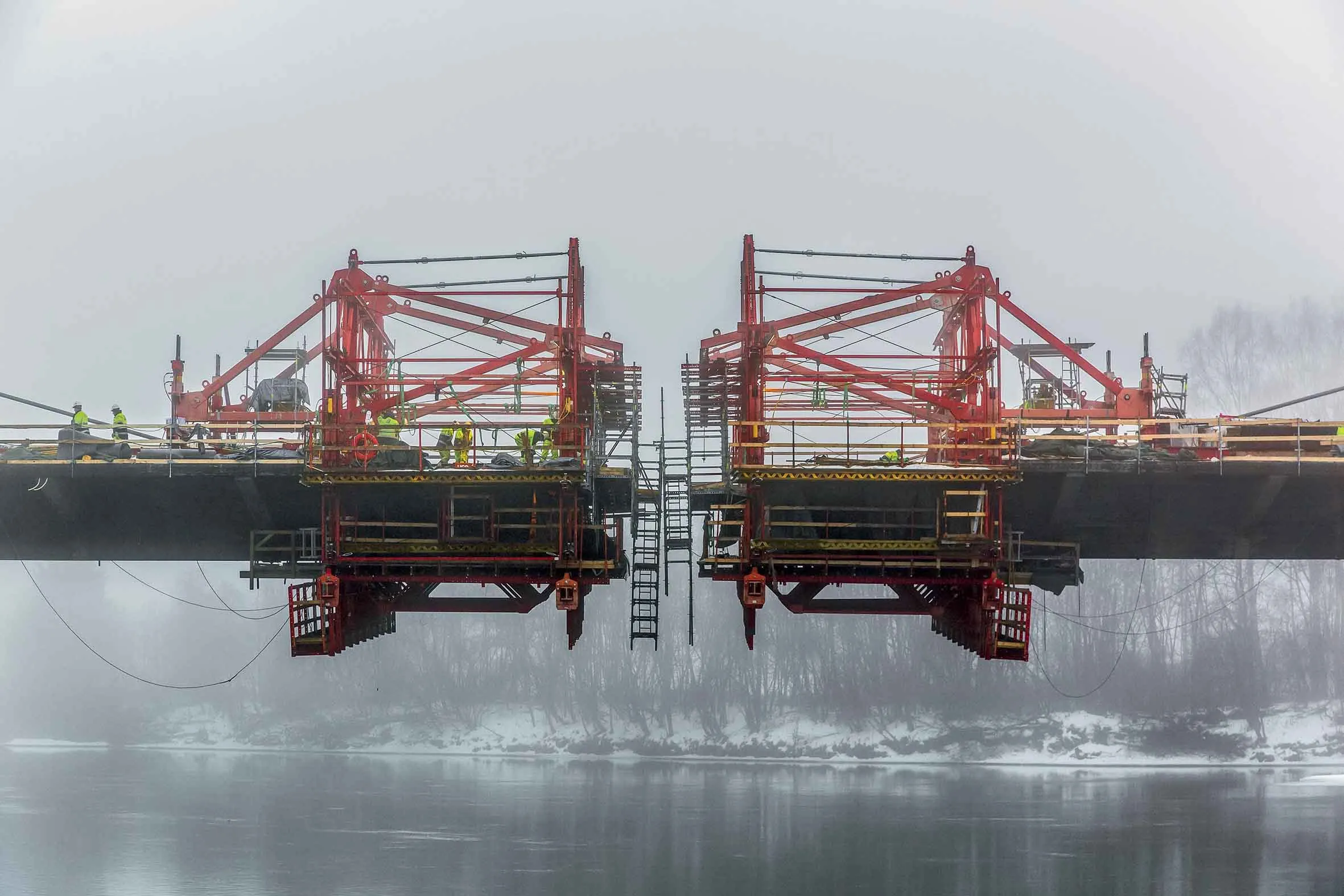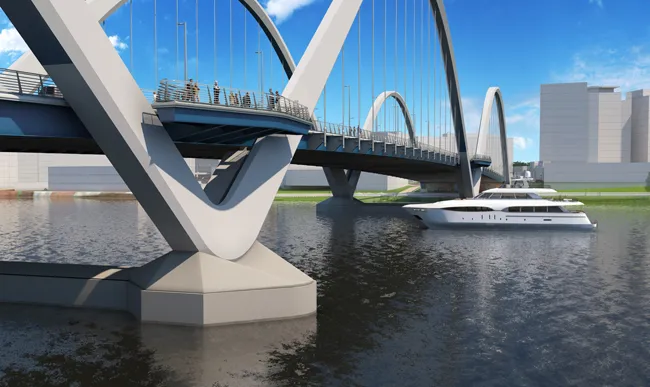Work is starting on the approach viaducts for the new Mersey Gateway Bridge in the UK. The project is using longest bridge-building machine in Europe, which was named during a ceremony to mark the latest key stage the Mersey Gateway Project. Most machines of this kind can only build bridge spans of up to 60m. However, the MSS for the Mersey Gateway Bridge was specially made so it is able to cast spans of up to 70m.
September 23, 2015
Read time: 2 mins

Work is starting on the approach viaducts for the new 6126 Mersey Gateway Bridge in the UK. The project is using longest bridge-building machine in Europe, which was named during a ceremony to mark the latest key stage the Mersey Gateway Project. Most machines of this kind can only build bridge spans of up to 60m. However, the MSS for the Mersey Gateway Bridge was specially made so it is able to cast spans of up to 70m.
It has taken construction teams three months to assemble the machine. This is no mean feat considering it includes approximately 1,200 components, 3,000 actual parts, and is held together by over 60,000 bolts. Now fully built, the MSS measures an impressive 157m long and weighs around 1,700tonnes. The MSS will now build the elevated road viaducts over the Mersey Estuary on both sides of the river, beginning with the north approach viaduct from the launch site at Catalyst Trade Park in Widnes.
The construction consortium Merseylink named the movable scaffolding system (MSS) at a special launching event at Catalyst Trade Park in Widnes. Merseylink held a competition for staff to name the MSS, with the winning name ‘Trinity' submitted by Lynn Jeary, who works in the project's communications team. The name Trinity symbolises the three bridge pylons as well as the three partners in the construction joint venture - Kier Infrastructure and Overseas Limited, Samsung C&T Corporation and FCC Construcción. The name also refers to the Merseylink bridge being sponsored by three major companies - Macquarie Capital, BBGI, and FCC.
It has taken construction teams three months to assemble the machine. This is no mean feat considering it includes approximately 1,200 components, 3,000 actual parts, and is held together by over 60,000 bolts. Now fully built, the MSS measures an impressive 157m long and weighs around 1,700tonnes. The MSS will now build the elevated road viaducts over the Mersey Estuary on both sides of the river, beginning with the north approach viaduct from the launch site at Catalyst Trade Park in Widnes.
The construction consortium Merseylink named the movable scaffolding system (MSS) at a special launching event at Catalyst Trade Park in Widnes. Merseylink held a competition for staff to name the MSS, with the winning name ‘Trinity' submitted by Lynn Jeary, who works in the project's communications team. The name Trinity symbolises the three bridge pylons as well as the three partners in the construction joint venture - Kier Infrastructure and Overseas Limited, Samsung C&T Corporation and FCC Construcción. The name also refers to the Merseylink bridge being sponsored by three major companies - Macquarie Capital, BBGI, and FCC.








